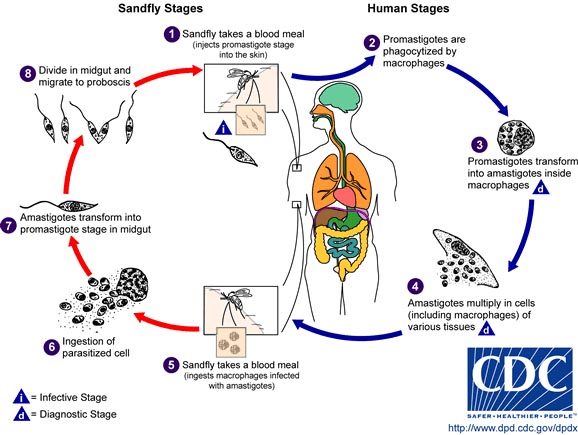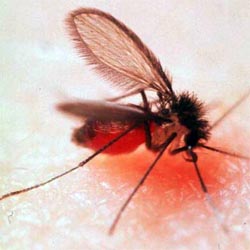Quick Facts
|
Leishmaniasis is caused by a parasite called Leishmania, which is transmitted via the bites of a tiny phlebotomine sandfly infected with the parasite. Symptoms can vary depending on the species of Leishmania. Cutaneous leishmaniasis is the most common form which produces ulcers on the exposed parts of the body. Lesions take months to heal, leaving large, disfiguring scars. Mucocutaneous leishmaniasis results in partial or total destruction of the mucous membranes of the nose, mouth and throat cavities and surrounding tissues, causing extreme disfigurement and often social rejection. Visceral leishmaniasis affects major organs and causes severe illness which is usually fatal if not treated. Pentavalent antimonials have been the first line treatment for visceral leishmaniasis for many years, but they are increasingly replaced by other treatments due to toxicity and appearance of resistance. The current treatment of choice is Amphotericin B. Miltefosine and paromomycin are emerging as effective therapies, however all available therapies have limitations including price, safety, effectiveness against all forms of the disease, and drug resistance.
What is it?
Similar to mosquitos, female sandflies need blood to fully develop their eggs. When an infected female sandfly bites a human to take a blood meal, parasites in the fly's saliva enter the wound and are taken up by granulocytes and macrophages in the blood. Parasites found in the fly 's saliva are in the promastigote form anddifferenciate to the amastigote form in the human macrophagecell. Once in the macrophage, theyreplicate, eventually rupturing the cell to release parasites ready to infect new cells.

Where does it occur?
 Leishmaniasis occurs in 88 countries in South America, Africa, Middle East, Asia, Southern Europe. Roughly 12 million people are affected with over 350 million at risk of infection. The disease is devastating in many ways; the cutaneous forms are debilitating and highly disfiguring, leading to social rejection, and the visceral forms are typically fatal in the absence of treatment.
Leishmaniasis occurs in 88 countries in South America, Africa, Middle East, Asia, Southern Europe. Roughly 12 million people are affected with over 350 million at risk of infection. The disease is devastating in many ways; the cutaneous forms are debilitating and highly disfiguring, leading to social rejection, and the visceral forms are typically fatal in the absence of treatment.

 Lutzomyia longipalpis: adult sandfly taking a bloodmeal on human skin. WHO/TDR/Stammers
Lutzomyia longipalpis: adult sandfly taking a bloodmeal on human skin. WHO/TDR/Stammers